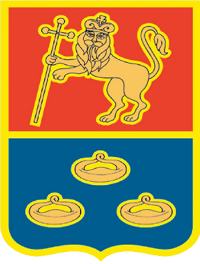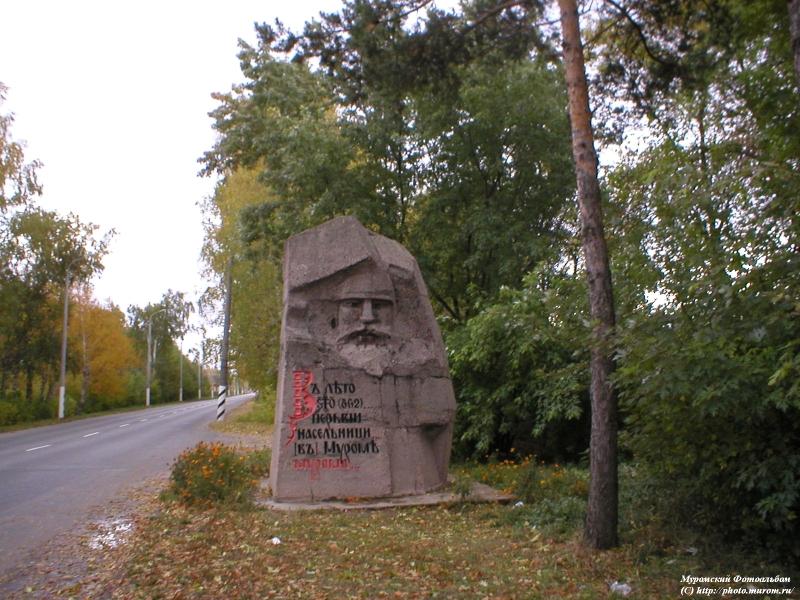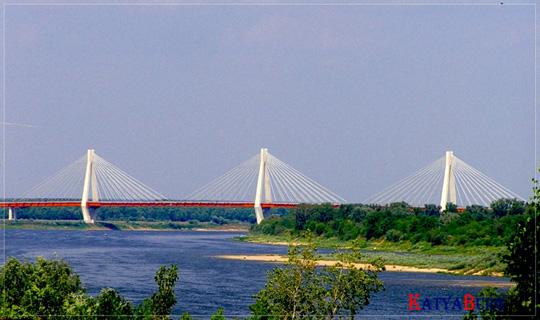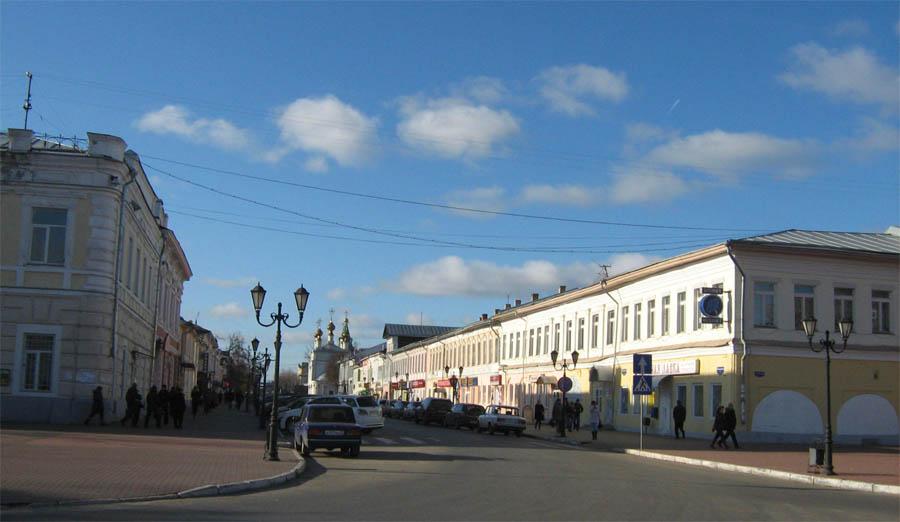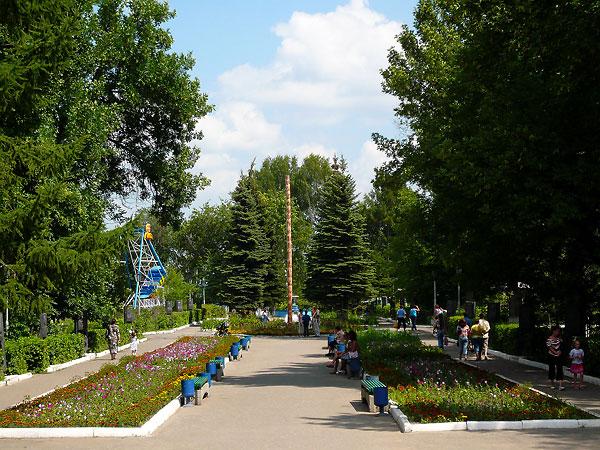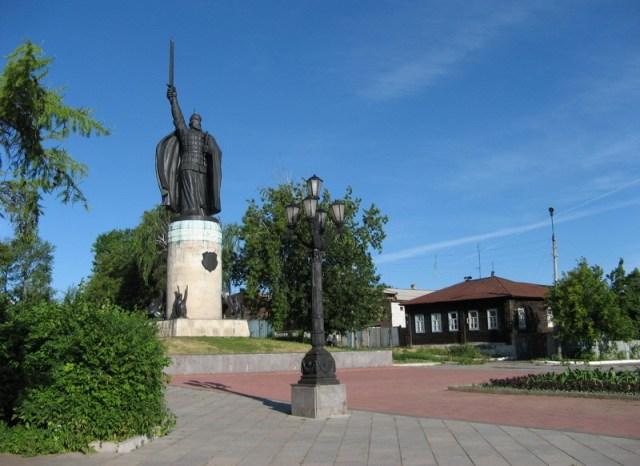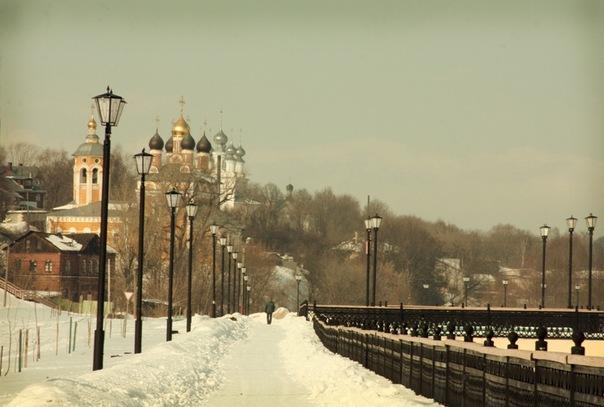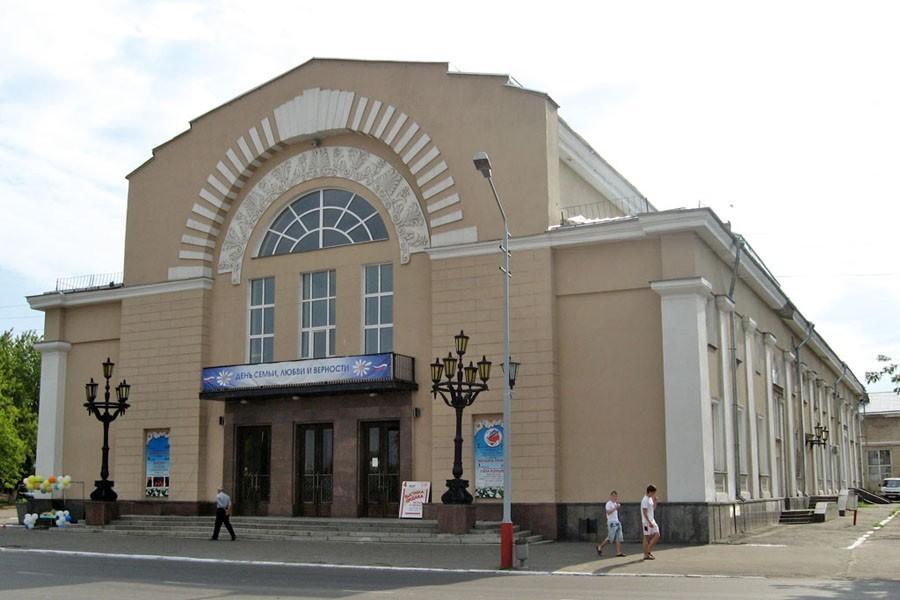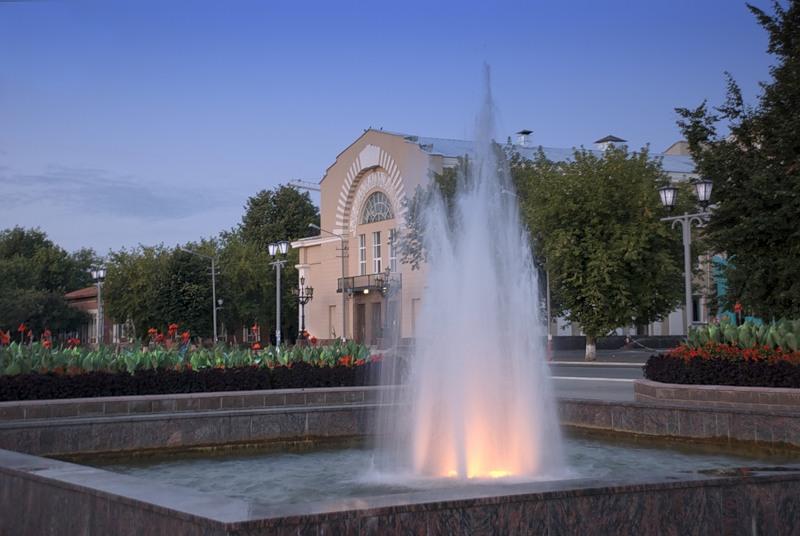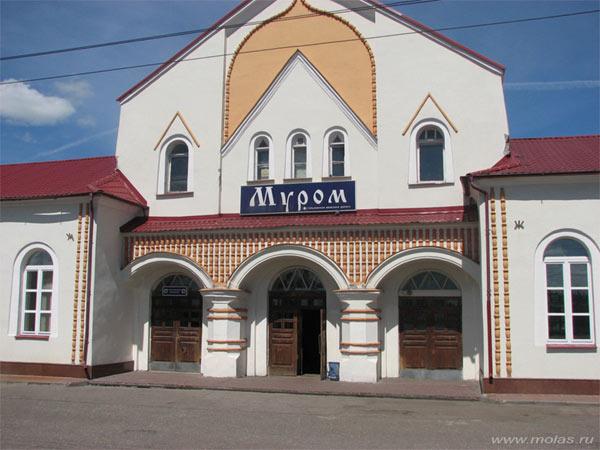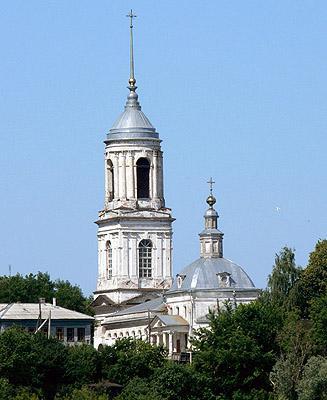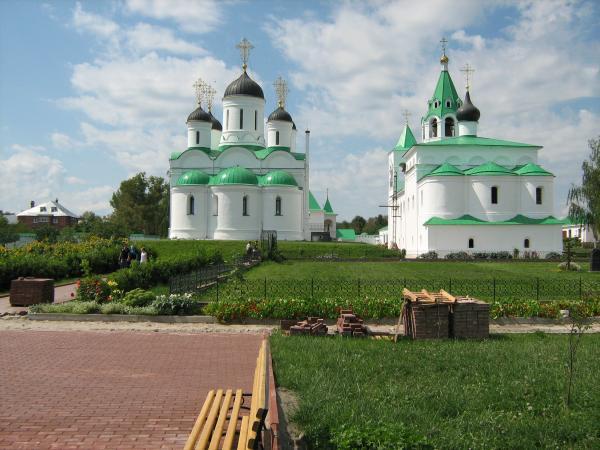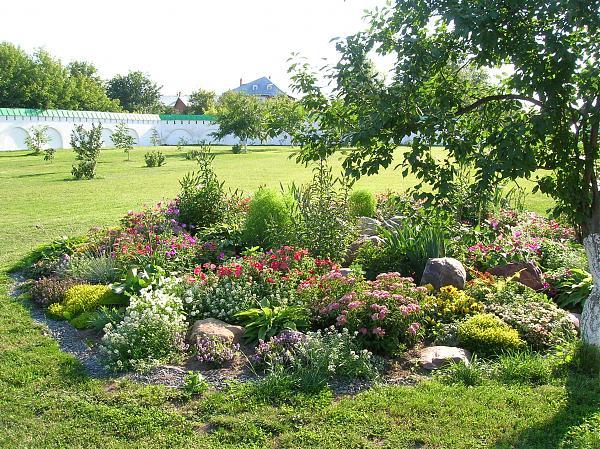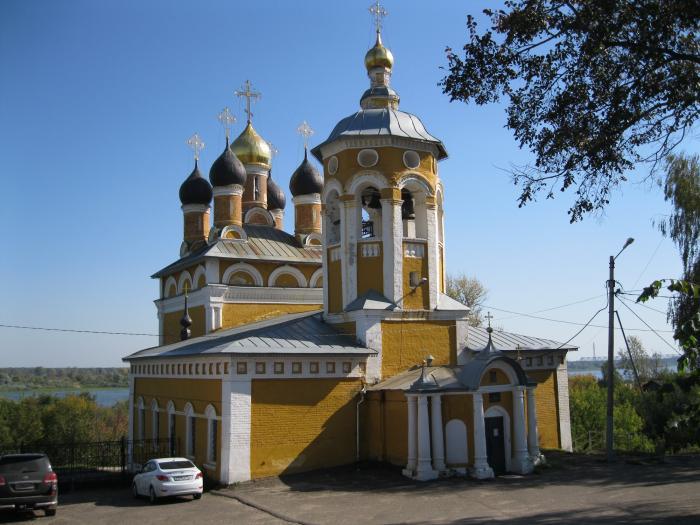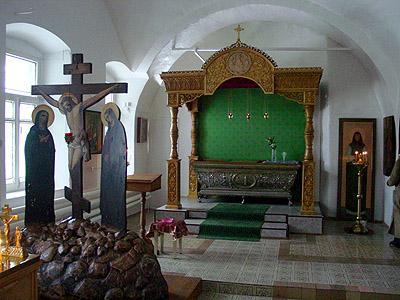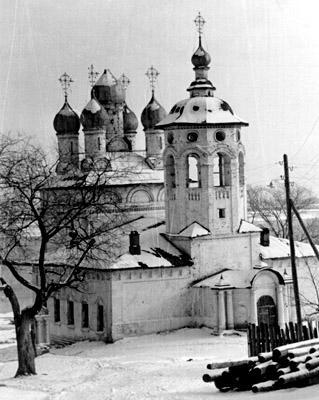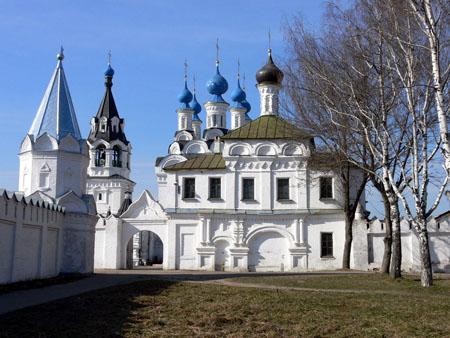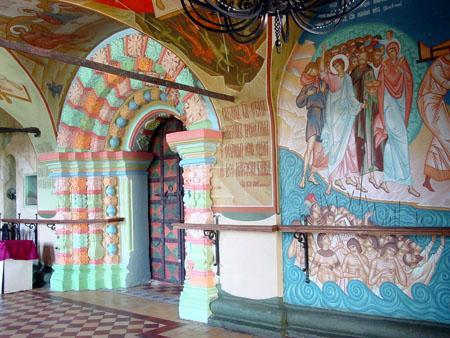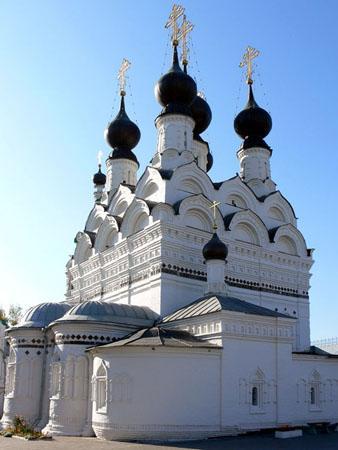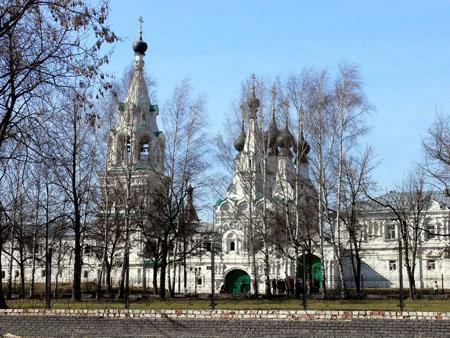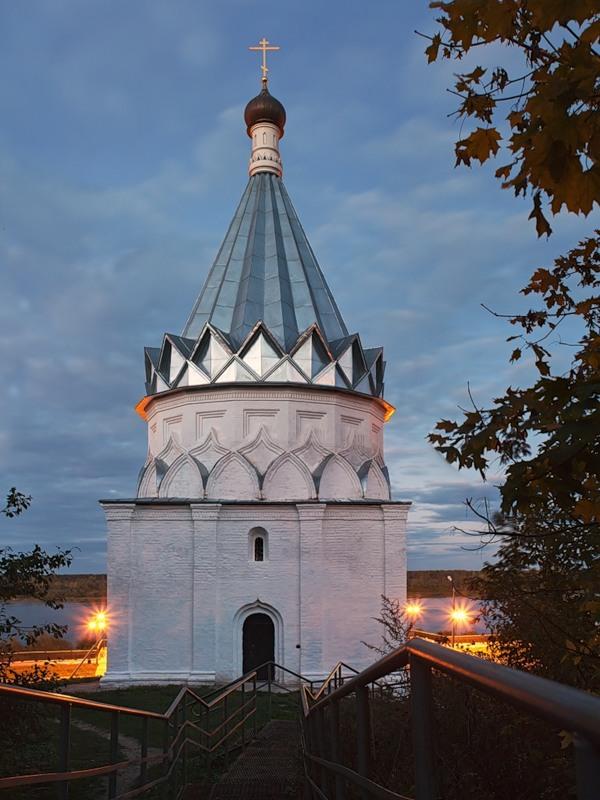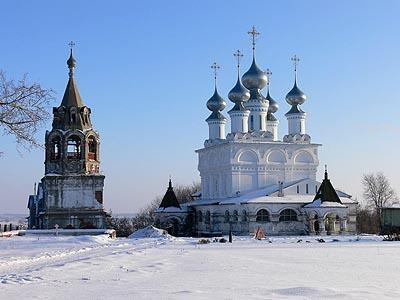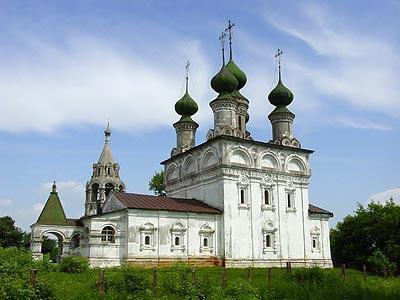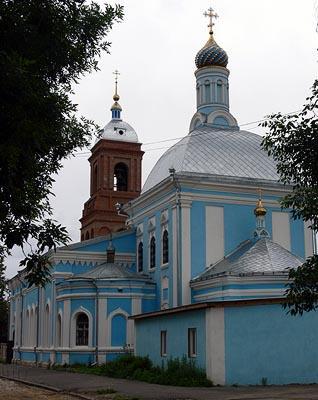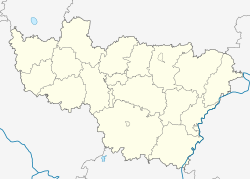TOPIC
73. Read the wordlist and try to remember the words of the topic “Murom. My home town”.
-
home
(native) town – родной
город -
found –
основывать -
founder –
основатель -
call –
звать,
называть -
because –
потому
что -
tribe –
племя -
is (are)
situated –
располагается -
population
– население -
railway
junction – железнодорожный
узел -
industrious
– промышленный -
major
–
основной, главный -
industry
– промышленность,
отрасль промышленности -
railway
switches –
железнодорожные стрелки -
soft
roofing – рубероид -
wood
production – деревообработка -
develop
– развивать -
trade –
торговля -
store
(Am) – магазин -
shopping
centre – торговый
центр -
build
(built) – строить -
inhabitant
– житель -
performance
– представление -
is (are)
held – проводится -
palace –
дворец -
exhibition
(hall)
– выставка (выставочный зал) -
cinema –
кино -
competition
– соревнование -
annually
– ежегодно -
icon –
икона -
arms –
оружие -
clothes
– одежда -
furniture
– мебель -
manuscript
– рукопись -
painting
– картина -
artist –
художник -
bone –
кость -
ancient
– древний -
animal –
животное -
square –
площадь -
church –
церковь -
monastery
– монастырь -
cathedral
– собор -
masterpiece
– шедевр -
great –
великий -
is (are)
famous –знаменитый -
field
–область -
inventor
– изобретатель -
society
– общество -
count –
граф -
epic
hero – былинный
герой -
warrior
– воин -
defender
– защитник -
borders
– границы -
land –
земля,
страна -
places
of interest – достопримечательности -
admire –
восхищаться
74. Look through the text and tell what each passage is about. Read the text again and answer the questions. *Murom
Murom is one of the oldest
Russian towns. It is called so because Ugro-finish tribes «Muroma»
lived here. It was founded in 862. It is situated on the left bank
of the Oka river. About 150,000 people live in Murom.
Murom is
an industrious town. Murom’s major industries are mechanical
engineering, radio-engineering, locomotive making, textile, food and
others. Now the plants of Murom have many economic problems. At
present the town is also a trade center. There are many new shopping
centres.
Muromers can get a good
education here. There are secondary schools, special schools,
vocational secondary schools and three institutes in Murom.
The cultural life of Murom is
good. Concerts and performances are held in the Place of Culture.
Exhibitions are organized in the Exhibition Hall. Murom has a good
historical museum with a collection of icons, old arms.
There are several squares,
monuments and parks in Murom. Murom has many churches and
monasteries.
Murom is associated with the
name of the epic hero Ilya Murometz.
Many great men were born in
Murom. Among them are Vladimir Kuzmich Zvorykin – the television
inventior, Count Uvarov – the founder of the Russian Archeological
Society, Ivan Kulikov – the academician of Painting.
Many tourists come to Murom
to admire its past and present.
Соседние файлы в предмете [НЕСОРТИРОВАННОЕ]
- #
- #
- #
- #
- #
- #
- #
- #
- #
- #
- #
MUROM
Murom is my native town. It is of the most ancient towns of Russia. A beautiful city with many parks and historical buildings, Murom is situated on the steep bank of the river Oka on the border with the Nizhniy Novgorod region.
First mentioned in chronicles in 862, the ancient Murom came into being at the place of the Finno-Ugric tribe «Muroma» settlement!! The Slavs settled here by the end of the 10th century First the town served as a Russian fortress on the bank of the river and in the middle age period it was an important commercial center.
The most ancient part is the central part of our town. There are many shops in the central streets, practically in every building.
Oksky Park is also a very popular place among our citizens. There are some attractions for children there The best place of the park is a small square where you can stand and enjoy the wounderful sight of the Oka river.
A monument to our national hero, Ilya Muromets , stands in the middle of this square. There is also a nice embankment which stretches along the bank of the river.
The cultural life of Murom has always been rich. One of the finest buildings is a Palace of Culture, which is situated in the center of town. Concerts of classical music and drama performances are often held here.
Leo Tolstoy street is one of the most beautiful streets of the town. Here you can see Victory Square with the monument to the Unknown Soldier. There is, also a central telegraph office on this square. Victory Square with its beautiful fountain is a favourite place among young people who like to meet there in summer.
Murom is also an important railway junction. It connects Moscow with the Urals, Siberia and Far East. The railway station was built last century m a typical Oriental style.
There are also many architectural monuments of the past: churches and cathedrals.
The Church of the Smolensk icon of the Mother of God (Smolenskaya)
The Church is situated on a high terrace of the Oka river. It was built in honour of the Smolensk icon of the Mother of God. This temple was built by a merchant Elin in 1804. The high bell tower was constructed in 1832, and a warm gallery – in 1838. In 1840 parishioners of the temple Murom merchants Titov, Elin, Kiselev donated a bell in 200 poods. An ancient cross of 1676 with particles of sacred powers was considered to be a relic of the church. In 1868 the church replaced ancient temple St. Kozmas and St. Demyan whose parish was liquidated after its destruction. Closed in 1930 the church became an exhibition hall of the local museum in 1977-1995. In August 1995 the temple was given back to the eparchy.
The Savior Monastery
The first mention of the Savior monastery in the Russian annals was made in 1095. A number of stone temples were erected in Murom, including the Transfiguration cathedral after the successful campaign of Ivan the Terrible to Kazan in the middle of the 16th century (the exact date of the construction is not known).
In December 1615 the town was exposed to invasion of the armed Lithuanian group commanded by A. Lisovsky. The Savior monastery suffered from the incursion. The Poles plundered churches, tore off the silver rizas and jewels from the icons.
In 1636 the territory of the monastery was surrounded by a wooden fencing. Inside the cloister there was a stone five-headed Transfiguration cathedral, Pokrov church, the stone church of St. Kirill Belozerski above the sacred gate. 28 monks lived in the monastery in 1636. Pokrov temple was rebuilt many times. Around 1687 a stone two-storeyed senior priest house was erected; it was the first stone civil construction in Murom.
The stone three-storyed bell tower with octahedral tent was erected in 1757 by Murom merchant Samarin P. It stood up to 1929 in the western part of Pokrov temple.
The stone fencing was constructed around the monastery in 1807-1810.
In 1891 a stone three-storeyed brotherly house with a church inside was erected.
The Savior monastery declined in the 18th century.
In 1725 one archimandrite and 19 monks lived in the monastery.
In 1886 there was the archimandrite, 5 celibate priests, 2 deacons, 17 lay brothers in the monastery.
The monastery was closed in 1918. In 1925 the church property of the monastery was given to the Murom museum.
In 1930 the monastery was occupied by the military department. At the same time the necropolis of the monastery was destroyed.
St. Nicholas Church on the Embankment (Nikolo-Naberezhnaya)
St. Nicholas Church is named so because it is situated on the bank of the Oka river. The foundation of the church is connected with tsar Ivan the Terrible and his stay in Murom during his military campaign to Kazan. The wooden church stood on this place up to 1700.
The construction of the stone temple instead of a wooden one began in 1700. Demetrius Khristoforov, the priest of Moscow temple of the Resurrection of Christ was the builder of the new temple.
The iconostasis was arranged in 1714. It was gilded in 1716 and in 1717 the temple was consecrated on the blessing of Right Reverend Stephan, metropolitan of Ryazan city.
The stone temple has preserved its original appearance till the present day. The temple has five-domes, the altar with three semicircular apses, windows in the temple are in two tiers.
The architecture of the temple is similar to the architecture of other Murom churches constructed in the 17th century.
St. Nicholas Church was closed in 1940. In 1990 the temple was transferred to Vladimir eparchy.
The shrine of sacred relic of St. Iulianiya Lazarevskaya is the object of worship of the temple. She is honoured for her godly life and mercy.
Saint Annunciation Monastery
The monastery on the spot of Annunciation church was founded on vow by Ivan the Terrible. In 1552 during his march to Kazan the tsar visited Murom and worshipped the new saints for victory and promised to found a monastery if the victory is won. During the construction works of the stone church on the place of the wooden one the tombs with relics of princes were found, which afterwards were solemnly moved into the new church.
Saint Trinity Convent
Saint Trinity convent was founded in 1642 by a rich merchant Tarasi Borisovitch, known by his nickname Bogdan Tsvetnoi. It was built in the spirit of new Moscow architectural tendencies. Prior to this time on this spot there stood a wooden church founded by prince Yuri Yaroslavich. In 1643 the patriarch blessed the foundation of a convent. Tsar Alexei Mikhailovitch supported the convent financially. In spite of the fires in 1792 and 1805, Trinity convent was built a new and continued to exist. In the beginning of the 20th century it had two churches: the cathedral, and the church over the gates. The convent maintained a parochial school for girls. The whole convent was administered by the Mother Superior.
Trinity convent, like all other monasteries of Murom, was closed down in the 1920s. Its architectural ensemble was retained almost completely.
Trinity convent was revived in May 1991.
At present on the territory of the convent one can see the architectural monuments: Trinity cathedral (1642-1643); Kazan church over the gate (1648); belfry (1652); fence and towers (1807-1808).
In the Trinity cathedral the shrine of sacred relics of St. Peter and Habronia is kept. St. Peter and Habronia are honoured as protector of the family and marriage in Russia.
The Church of St. Kozma and St. Demyan (Kozmodemyanskaya)
In the 16th century, during the Ivan the Terrible period, four stone churches were built in Murom. One of them is the tent-shaped church of St. Kozma and St. Demyan on the bank of the Oka. St.Kozma and Demyan church, a very attractive tent-shaped building, is the best masterpiece of architecture of the 16th century. Unfortunately, this beautiful building has a distorted shape: in April 6, 1868 the top of the church, twelve-faceted tent-shaped structure, caved in. But even the ruins of St.Kozma and Demyan church attract those who like art clean shaped proportion and unusual picturesqueness of the appearance.
The Convent of Christ Resurrection (Voskresensky)
The churches of the Convent of Christ Resurrection have been known since the middle of the 16th century. The Convent was mentioned in town chronicles of 1636. Stone temples were constructed by Avraam Cherkasov in the middle of the 17th century instead of wooden ones in the reign of Tsar Aleksey Mikhailovich. Closed in 1930 the Convent was utilized for dwelling and a store house. The temples were opened again in the 1990s.
The Receptional Church (Sretenskaya)
The Receptional Church is situated in K. Marx street. The wooden church in honour of Demetrius Solunsky was built here in the 16th century. This church was first mentioned in 1574. The stone temple was erected in 1795 due to a rich Murom merchant Zworykin’s donation. The temple was reconstructed in 1888-92. A large wooden Cross was the main relic of a temple. The citizens of Murom prayed here during strong epidemics and diseases.
- Home
- Russia
- Murom
Murom, Russia
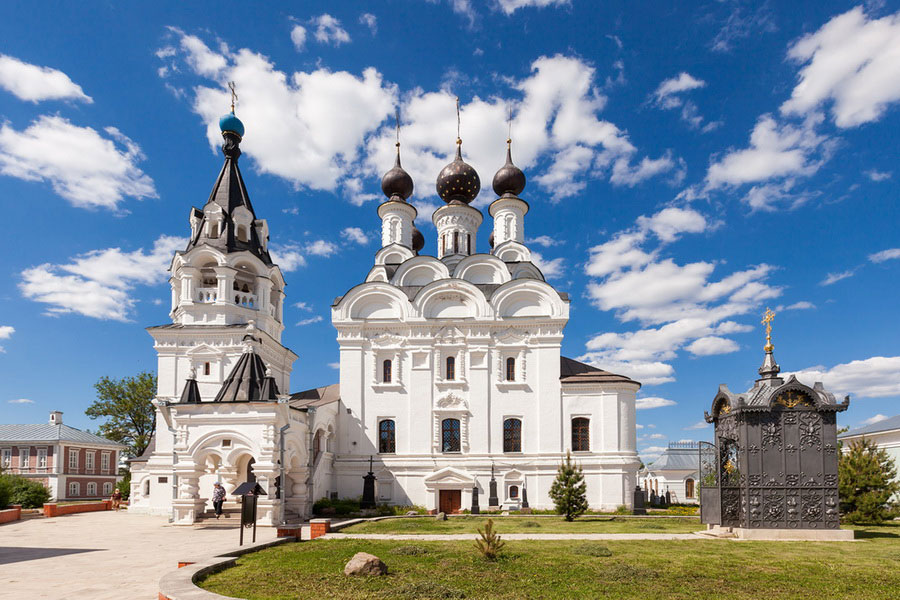
Murom Travel Guide
- 1. Murom in the pages of history
- 2. Attractions of Murom
- 3. Murom today
Among dense forests and oak groves, rich meadows and torrential rivers lies the city of Murom, Russia. The city sits 300 kilometers from Moscow along the hilly banks of the Oka River and forms a link in the Golden Ring of Russia, a popular tourist route comprised of a loop of picturesque, historic towns.
The word murom, meaning «high ground” or “water in the mountain» was an old Finnish word from which the Finno-Ugric Murom tribe, who lived in the area before the arrival of the Slavs, got their name. Through its name, the city of Murom has retained the imprint of its original inhabitants to this day.
Murom is one of the oldest cities in Russia and is defined by a heritage of national heroes, ancient architecture and religious devotees. The names and activities of more than twenty Orthodox saints are associated with this unique city, whose monasteries, icons, and miracle workers have long been famous throughout Russia. Epic hero Ilya Muromets, hailed for his great power and love for his homeland, was purportedly born in the vicinity of Murom. His name, reflective of his Muromite roots, is now synonymous for the strength of the Russian spirit.
Murom in the Pages of History
Murom is the historical center of Russia, an ancient city first mentioned in manuscripts in 862 AD and one of the few Russian cities that has preserved the memory of the Finno-Ugric tribes that once lived on its territory.
Even in the 6th-7th centuries, the Murom tribe had a large settlement in the very place where the city of Murom is located today. The tribe had trade relations with the neighboring Bulgars and Slavs, with valuable furs of sable, foxes, martens and squirrels, as well as beeswax and fish, being the main products in demand.
Handicraft production was poorly developed among the Murom, and gradually the settlement became dominated by Slavic artisans, and later by vigilantes. Thus, Murom morphed into a Slavic city. The first prince of Murom is considered to be Gleb Vladimirovich, who took power in the early 11th century.
By this time, Murom was ideally located at a crossroads of trade routes between Russia and Bulgaria. The city grew in importance as a trading center and has long held status as the far eastern outpost of Russia. Trade with the Bulgars, Ryazan and Chernihiv flourished in Murom under early Slavic domination, during which time the city also developed in pottery, blacksmithing, bone-carving and metalworking crafts.
Murom did not escape the invasion of Russia by the Mongol-Tatars. Due to internal fighting between the Russian princes at that time, there was no one to protect Murom against its attackers, who burned the city to the ground in 1237. Its citizens were subsequently subjugated and taxed, and more than a century passed before Murom was rebuilt in 1351. By the end of the 14th century, it was classified as one of the easternmost settlements of the Moscow Principality.
Tsar Ivan the Terrible, who was the first tzar of Russia, marched to Kazan to seize it from the Kazan Khanate in 1552. One of his numerous armies marched through Murom, which in July of that year operated as a military camp: soldiers flooded the city, setting up camp in its streets under battle flags and chopping down trees from its riverbanks to use for rafts and ploughs. Ivan the Terrible himself watched from his tent as the army crossed the Oka River, heading towards the Sakan Forest and beyond. In the ranks of this valiant army was the Murom squad, which distinguished itself in the Siege of Kazan.
During the political upheaval in Russia known as the Time of Troubles, the inhabitants of Murom took an active role in the fight against foreign invaders. In 1727, the Murom 21st Infantry Regiment was formed in the Russian army and continued as a distinct division for two centuries. This valiant regiment made a name for itself through its many accomplishments: The squadron performed its first feat in the Seven Years’ War against King Frederick II of Prussia and participated in almost all of Russian General Alexander Suvorov’s Italian and Swiss campaigns. It victoriously entered Berlin in 1760 and 1813, and Paris in 1815.
As Russia’s military campaigns began to lessen, life in Murom gradually returned to normal. Trade was revived and various crafts developed. Murom fishermen supplied red fish for the royal table and its fishermen became famous throughout the country for their ability to stratify fish. At the same time, Murom’s kalach, a white artisan bread baked in a braided shape, gained recognition as one of the finest breads in Russia, an honor which it holds to this day.
After the abolition of serfdom in Murom, capitalist production began to develop. Manufacturing workshops gradually gave way to mechanized enterprises, while flax-spinning factories and mechanical and oil mills were opened in the city.
In 1845, the first steamship appeared in Murom and in 1858, a regular steamship service was established with other cities located on the Oka River. In 1880, the Kovrov — Murom Railway Line was laid. In the 1920s Murom was annexed into Russia’s Nizhny Novgorod Region and in 1944 was declared the capital of Murom District of Russia’s Vladimir Oblast (Region).
Attractions of Murom
Although Murom may not receive the boatloads of tourists that other Golden Ring towns such as Suzdal or Vladimir are accustomed to, it is nevertheless a remarkable city in its own right.
The Spaso-Preobrazhenskyi Cathedral (Transfiguration Cathedral) is the oldest architectural structure not only in Murom, but in the entire Oka River territory. Located on the southern edge of the old city center, it was built in the 16th century and celebrated its 900th anniversary in 1997.
In historic Murom, one can still see 19th century trading rows located on the banks of the Oka, from which you can admire a panoramic view of the ancient Trinity and Annunciation Monasteries.
The inception of Annunciation Monastery began centuries prior to its construction. Prince Constantine, who first brought Christianity to Murom, was canonized in 1457 and buried in the city along with his wife and two children, an act which brought a holy status to Murom. In 1552 Tsar Ivan the Terrible visited Murom on his way to Kazan, where it is believed that he vowed to establish a monastery if victorious in his campaign. Kazan was captured, and Annunciation Monastery, whose architecture greatly resembles that of nearby Holy Trinity Convent, was built in Murom.
Holy Trinity Convent stands where the former courtyard of Prince Yuri Yaroslavich was once located. The princely court was rendered defunct in the 17th century and in 1642-1643, the Cathedral of the Holy Trinity was built. Shortly thereafter, with the permission of the patriarch, the nunnery was built to accompany it. The ensemble includes the Church of Kazan Mother of God and the Church of St. Sergius of Radonezh, brought to the site from a local village. There is also a bell tower which, upon its completion in 1652, was the city’s tallest structure and thus served as a guide for ships and wagons.
Today, Trinity Monastery serves as a place of pilgrimage, thanks largely to the relics it contains of Saints Peter and Fevronia, patrons of love and marriage who purportedly hold powers to heal infertility. In 2008, a monument to Peter and Fevronia was erected in front of the Wedding Palace.
Several notable houses of worship can be found near Murom’s Oka River. Nikolo-Naberezhnaya Church was founded in 1700-1714 on the site of an old wooden church. The modest Church of Kozma and Demyan was built more than four hundred years ago in honor of the saints Kozma and Demyan, whose precise identity remains unknown. Resurrection Convent, another simple complex built in the mid-17th century, includes the five-domed Resurrection Church, the single-domed Vvedenskaya Church and a bell tower.
The Murom History and Art Museum, often called the «Little Hermitage», is located in the former house of the Zvorykin merchant family. It includes an exhibition of merchant life and an admirable collection of ancient and modern works by famous local artists.
A house in Murom believed to mark the spot where the epic hero Ilya Muromets was born is denoted with a memorial plaque. A monument to Muromets, created by famous sculptor V. M. Klykov in 1999, depicts the hero in a helmet and chain armor, with his right hand wielding a raised sword and his left hand clutching a cross. The statue can be found behind Oksky Park, a popular cultural and amusement center.
Murom Today
Modern-day Murom has managed to retain not only its original name, but also its historical appearance. Murom is the oldest city in Vladimir Region (also known as Russia’s Region 33), having turned 1150 years old in 2012.
Visitors to this unique city will notice a sharp contrast between Murom’s historic and modern districts. Everything breathes modernity in the clean and well-maintained city center, from the shop windows to the stream of cars to the pedestrians hurrying about their business. Take a walk around the coastal neighborhoods, however, and you will feel the peaceful, quiet ambience of an ancient city. The site of ancient stone mansions hidden under dense crowns of trees, sagging wicket gates and peculiar wooden houses with carved valances is truly magnificent.
Not only is Murom one of the oldest and largest cities in Vladimir Region, it is also a major industrial center. The city is home to over thirty enterprises equipped with the latest technology, and distributes goods, such as its Murom Primers for pistols and rifles, that are known well beyond Russia’s borders.
In 2008, Murom hosted the first All-Russia Day of Family, Love and Fidelity, which now attracts tourists from around the world to its annual celebration on July 8th.
Another annual observance in Murom is City Day, celebrated with the Bogatyrskie Zabavi (Heroic Fun) Tourist Festival. Visitors can enjoy a theatrical program, concerts by the famous Murom Ensemble, historical reenactments, competitions, Russian entertainment and delicious local dishes and delicacies.
Tourists to Murom will not be disappointed by its diverse souvenirs, ranging from unique replicas of ancient maces, clubs, swords and helmets, to original dishes, leather shoes and fine linen products including napkins, towels and tablecloths.
Welcome to Murom in Russia, the ancient city woven from legends and traditions!
Attractions
Leisure
Слайд 1
Welcome to Murom
Слайд 3
Ilya Murometz is the most famous of the mighty warriors, known as Bogatyrs , of the Russian » Bilyny » legends. This legendary hero was unable to move during his first 33 years of his life. Then one day he was visited in his house by the three Holy Old Men, who asked Ilya for some water. Ilya became furious, as he thought the Old Men were playing a joke on him when they commanded Ilya to get up, much to his own surprise, Ilya rose. From that moment on he became a warrior of extraordinary powers and the defender of the Holy Russia. Among his most famous deeds are: the single handed destruction of the Tatar army, sleight of the town of Chernigov and the capture of the Evil Bandit the Nightingale Whistler, (also known as » Solovey Razboynik » ), who had the power of killing people with his whistle. Ilya of Murom, a defender of the Lands of Russia, is portrayed a friend of the simple folk, a symbol of liberty and fairness, and sometimes as a raging rebel who dared to quarrel with the Duke of Kiev, and who almost destroyed the City of Kiev. In the end he returned to his senses, and Ilya Murometz became the Best Warrior and the Wisest Adviser to Duke Vladimir of Kiev .
Слайд 4
Annunciation monastery was founded at the behest of Ivan the Terrible in the middle of the 16th century. Before its founding the Temple of Annunciation was here where were found the relics of Murom`s Saints Princes Konstantin and his sons Michael and Fjodor . The story of the christening of the local inhabitants was connected with the name of Prince of Chernigov Constantine (Murom fell to his lot). In «the story of establishment of Christianity in Murom (16th century)is said: the pagans, not wishing to adopt Christianity killed the son of Prince Mikhail, approached the prince`s palace. The prince met in them holding no weapons, but only an icon of the mother of God (later it became known as the Murom`s icon of the mother of God). The icon brightens, and pagans were staggered with the miracle and adopted Christianity. Prince Constantine and his sons were canonized by the Church Cathedral in 1547.
Слайд 5
In a remote part of the old Murom, on the Bank of the Oka River, stands a pair of temples – Resurrection Cathedral (1658g.) and the Vvedenskaya Church (1659g). The temples belong to Voskresenskiy monastery of which time of foundation there is no any information. It was first mentioned in 1566 . In the stories it is also known that the monastery was founded on the place where stood a country Palace of St Pyotr and Fevroniya . And now a little lower the monastery there is the Holy spring of St Pyotr and Fevroniya . Later this place was named Kozhevennaya sloboda .
Слайд 6
The Trinity convent was founded in 1643 by a rich merchant of Murom in place of a church . According to a legend Prince Konstantin of Murom founded the wooden church in the name of Boris and Gleb , the first Russian Saints.The Trinity monastery is special and unique. It is famous for its tzrazcah , decorating the appearance of the temple. The monastery is also famous for its main shrine of Holy relics of St Pyotr and Fevroniya , patrons of family happiness and well-being.
Слайд 8
If you want to visit Murom it will take you only an hour and a half to get there by car from our town. And if you come and see the town you will enjoy your trip. Murom is worth visiting.
For the ancient Murom Tribe, see Volga Finns.
|
Murom Муром |
|
|---|---|
|
City[1] |
|
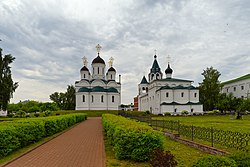
Murom Transfiguration monastery |
|
|
Flag Coat of arms |
|
|
Location of Murom |
|
|
Murom Location of Murom Murom Murom (Vladimir Oblast) |
|
| Coordinates: 55°34′N 42°02′E / 55.567°N 42.033°ECoordinates: 55°34′N 42°02′E / 55.567°N 42.033°E | |
| Country | Russia |
| Federal subject | Vladimir Oblast[2] |
| First mentioned | 862 |
| Government | |
| • Head[3] | Yevgeny Rychkov[3] |
| Elevation | 115 m (377 ft) |
| Population
(2010 Census)[4] |
|
| • Total | 116,075 |
| • Estimate
(2018)[5] |
109,072 (−6%) |
| • Rank | 140th in 2010 |
|
Administrative status |
|
| • Subordinated to | City of Murom[2] |
| • Capital of | Muromsky District[6], City of Murom[2] |
|
Municipal status |
|
| • Urban okrug | Murom Urban Okrug[7] |
| • Capital of | Murom Urban Okrug[7], Muromsky Municipal District[8] |
| Time zone | UTC+3 (MSK |
| Postal code(s)[10] |
602250 |
| Dialing code(s) | +7 49234 |
| OKTMO ID | 17735000001 |
| Website | www.murom.info |
Murom (Russian: Муром, IPA: [ˈmurəm]; Old Norse: Moramar) is a historical city in Vladimir Oblast, Russia, which sprawls along the left bank of the Oka River. Population: 107,497 (2021 Census);[11] 116,075 (2010 Census);[4] 126,901 (2002 Census);[12] 124,229 (1989 Census).[13]
History[edit]
In the 9th century AD, the city marked the easternmost settlement of the East Slavs in the land of the Finnic Muromians. The Primary Chronicle mentions it as early as AD 862.[14] It is thus one of the oldest cities in Russia. Circa 900 AD, it was an important trading post from Volga Bulgaria to the Baltic Sea.
Between AD 1010 and AD 1393, it was the capital of a separate principality, whose rulers included Saint Gleb, assassinated in AD 1015 and canonized in AD 1071, Saint Prince Konstantin the Blessed, and Saints Peter and Fevronia of Murom, subjects of an opera by Rimsky-Korsakov. It was believed to be the home town of the most celebrated East Slavic epic hero, Ilya Muromets. The town has a statue which shows Ilya holding the hilt of his sword in the left hand and a cross in the right.
On June 30, 1961, Murom was the site of a spontaneous protest and riot against the police and Soviet authorities, following the death in police custody of a senior factory foreman named Kostikov.[15]
Administrative and municipal status[edit]
Within the framework of administrative divisions, Murom serves as the administrative center of Muromsky District,[6] even though it is not a part of it.[1] As an administrative division, it is incorporated separately as the City of Murom—an administrative unit with the status equal to that of the districts.[2] As a municipal division, the territory of the City of Murom together with nine rural localities in Muromsky District are incorporated as Murom Urban Okrug.[1][7]
Sights[edit]
-
Three historic abbeys in the city center
-
The main church of the Holy Trinity Monastery (1642-1643)
-
Aerial view of the city in 2014
Murom still retains many marks of antiquity. The Savior monastery, one of the most ancient in Russia, was first chronicled in 1096, when Oleg of Chernigov besieged it and killed Vladimir Monomakh’s son Izyaslav, who is buried there. In 1552, the monastery was visited by Ivan the Terrible who commissioned a stone cathedral, which was followed by other churches.
The Trinity convent, where the relics of Sts. Peter and Fevronia are displayed, features a fine cathedral (1642–1643), Kazan church (1652), a bell-tower (1652), a wooden church of St. Sergius, and stone walls. It is rivaled by the Annunciation Monastery, founded in the reign of Ivan the Terrible to house the relics of local princes and containing a cathedral from 1664. Two last-mentioned cathedrals, being probably the works of the same masters, have much in common with the Resurrection Church (1658) in the downtown. Quite different is the tent-like church of Sts. Cosmas and Damian, built in 1565 on the bank of the Oka to commemorate the Russian conquest of Kazan.
International relations[edit]
Twin towns — Sister cities[edit]
Murom is twinned with:
Notable people[edit]
Among notable natives are the father of color photography, Sergey Prokudin-Gorsky (1863), the painter Ivan Kulikov[16](1875) and the father of television, Vladimir Zworykin (1888) and Russian physicist Igor Irodov.
References[edit]
Notes[edit]
- ^ a b c Resolution #433
- ^ a b c d Law #130-OZ
- ^ a b Official website of Murom Urban Okrug. Yevgeny Rychkov, Head of the Urban Okrug Archived March 23, 2011, at the Wayback Machine (in Russian)
- ^ a b Russian Federal State Statistics Service (2011). Всероссийская перепись населения 2010 года. Том 1 [2010 All-Russian Population Census, vol. 1]. Всероссийская перепись населения 2010 года [2010 All-Russia Population Census] (in Russian). Federal State Statistics Service.
- ^ «26. Численность постоянного населения Российской Федерации по муниципальным образованиям на 1 января 2018 года». Federal State Statistics Service. Retrieved January 23, 2019.
- ^ a b Государственный комитет Российской Федерации по статистике. Комитет Российской Федерации по стандартизации, метрологии и сертификации. №ОК 019-95 1 января 1997 г. «Общероссийский классификатор объектов административно-территориального деления. Код 17 244», в ред. изменения №278/2015 от 1 января 2016 г.. (State Statistics Committee of the Russian Federation. Committee of the Russian Federation on Standardization, Metrology, and Certification. #OK 019-95 January 1, 1997 Russian Classification of Objects of Administrative Division (OKATO). Code 17 244, as amended by the Amendment #278/2015 of January 1, 2016. ).
- ^ a b c Law #53-OZ
- ^ Law #58-OZ
- ^ «Об исчислении времени». Официальный интернет-портал правовой информации (in Russian). June 3, 2011. Retrieved January 19, 2019.
- ^ Почта России. Информационно-вычислительный центр ОАСУ РПО. (Russian Post). Поиск объектов почтовой связи (Postal Objects Search) (in Russian)
- ^ Russian Federal State Statistics Service. Всероссийская перепись населения 2020 года. Том 1 [2020 All-Russian Population Census, vol. 1] (XLS) (in Russian). Federal State Statistics Service.
- ^ Russian Federal State Statistics Service (May 21, 2004). Численность населения России, субъектов Российской Федерации в составе федеральных округов, районов, городских поселений, сельских населённых пунктов – районных центров и сельских населённых пунктов с населением 3 тысячи и более человек [Population of Russia, Its Federal Districts, Federal Subjects, Districts, Urban Localities, Rural Localities—Administrative Centers, and Rural Localities with Population of Over 3,000] (XLS). Всероссийская перепись населения 2002 года [All-Russia Population Census of 2002] (in Russian).
- ^ Всесоюзная перепись населения 1989 г. Численность наличного населения союзных и автономных республик, автономных областей и округов, краёв, областей, районов, городских поселений и сёл-райцентров [All Union Population Census of 1989: Present Population of Union and Autonomous Republics, Autonomous Oblasts and Okrugs, Krais, Oblasts, Districts, Urban Settlements, and Villages Serving as District Administrative Centers]. Всесоюзная перепись населения 1989 года [All-Union Population Census of 1989] (in Russian). Институт демографии Национального исследовательского университета: Высшая школа экономики [Institute of Demography at the National Research University: Higher School of Economics]. 1989 – via Demoscope Weekly.
- ^ Hazzard Cross; Samuel and Sherbowitz-Wetzor; Olgerd P. (1953). The Russian Primary Chronicle: Laurentian Text (PDF). Medieval Academy of America, Cambridge, MA. pp. 59–60.
- ^ Kozlov, Vladimir A.; McClarnand MacKinnon, Elaine (2002). Mass uprisings in the USSR: protest and rebellion in the post-Stalin years. ISBN 9780765606686.
- ^ Brief biography and appreciation Archived 2013-01-10 at archive.today @ the Museum of Nizhny Novgorod State University
Sources[edit]
Wikimedia Commons has media related to Murom.
- Законодательное Собрание Владимирской области. Закон №130-ОЗ от 10 декабря 2001 г. «Об административно-территориальном устройстве Владимирской области и о порядке его изменения», в ред. Закона №22-ОЗ от 18 марта 2014 г. «О признании утратившими силу части 1 статьи 15 Закона Владимирской области «Об административно-территориальном устройстве Владимирской области и о порядке его изменения» и пункта 3 статьи 1 Закона Владимирской области «О внесении изменений в Закон Владимирской области «Об административно-территориальном устройстве Владимирской области и о порядке его изменения»». Вступил в силу со дня официального опубликования (13 декабря 2001 г.). Опубликован: «Владимирские ведомости», №232, 13 декабря 2001 г. (Legislative Assembly of Vladimir Oblast. Law #130-OZ of December 10, 2001 On the Administrative-Territorial Structure of Vladimir Oblast and on Procedures for Its Change, as amended by the Law #22-OZ of March 18, 2014 On Abrogating Part 1 of Article 15 of the Law of Vladimir Oblast «On the Administrative-Territorial Structure of Vladimir Oblast and on Procedures for Its Change» and Item 3 of Article 1 of the Law of Vladimir Oblast «On Amending the Law of Vladimir Oblast «On the Administrative-Territorial Structure of Vladimir Oblast and on Procedures for Its Change». Effective as of the day of the official publication (December 13, 2001).).
- Администрация Владимирской области. Постановление №433 от 13 июня 2007 г. «О реестре административно-территориальных образований и единиц Владимирской области», в ред. Постановления №169 от 5 марта 2015 г. «О внесении изменения в Постановление Губернатора области от 13.06.2007 №433 «О реестре административно-территориальных образований и единиц Владимирской области»». Вступил в силу со дня официального опубликования. Опубликован: «Владимирские ведомости», №114, 20 июня 2007 г. (Administration of Vladimir Oblast. Resolution #433 of June 13, 2007 On the Registry of the Administrative-Territorial Formations and Units of Vladimir Oblast, as amended by the Resolution #169 of March 5, 2015 On Amending Resolution #433 of the Oblast Governor of June 13, 2007 «On the Registry of the Administrative-Territorial Formations and Units of Vladimir Oblast». Effective as of the day of the official publication.).
- Законодательное Собрание Владимирской области. Закон №53-ОЗ от 11 мая 2005 г. «О наделении статусом городского округа муниципального образования округ Муром и установлении его границы», в ред. Закона №85-ОЗ от 12 октября 2011 г «О внесении изменений в Приложения 1 и 2 к Закону Владимирской области «О наделении статусом городского округа муниципального образования округ Муром и установлении его границы»». Вступил в силу 17 мая 2005 г. Опубликован: «Владимирские ведомости», №156–157, 17 мая 2005 г. (Legislative Assembly of Vladimir Oblast. Law #53-OZ of May 11, 2005 On Granting Urban Okrug Status to the Municipal Formation of the Okrug of Murom and on Establishing Its Border, as amended by the Law #85-OZ of October 12, 2011 On Amending Appendices 1 and 2 to the Law of Vladimir Oblast «On Granting Urban Okrug Status to the Municipal Formation of the Okrug of Murom and on Establishing Its Border». Effective as of May 17, 2005.).
- Законодательное Собрание Владимирской области. Закон №58-ОЗ от 13 мая 2005 г. «О наделении соответствующим статусом вновь образованного муниципального образования Муромский район и вновь образованных муниципальных образований, входящих в его состав, и установлении их границ», в ред. Закона №115-ОЗ от 10 августа 2009 г «О внесении изменений в Закон Владимирской области «О наделении соответствующим статусом вновь образованного муниципального образования Муромский район и вновь образованных муниципальных образований, входящих в его состав, и установлении их границ»». Вступил в силу со дня официального опубликования (18 мая 2005 г.). Опубликован: «Владимирские ведомости», №№158–165, 18 мая 2005 г. (Legislative Assembly of Vladimir Oblast. Law #58-OZ of May 13, 2005 On Granting an Appropriate Status to the Newly Established Municipal Formation of Muromsky District and to the Newly Established Municipal Formations Which Comprise It, and on Establishing Their Borders, as amended by the Law #115-OZ of August 10, 2009 On Amending the Law of Vladimir Oblast «On Granting an Appropriate Status to the Newly Established Municipal Formation of Muromsky District and to the Newly Established Municipal Formations Which Comprise It, and on Establishing Their Borders». Effective as of the day of the official publication (May 18, 2005).).
Очень часто при общении или переписке с иностранцами мы рассказываем о своей культуре, природе, традициях, природных особенностях — в общем, о нашей Родине. Поэтому для нас важно знать, что и как рассказать о России, чтобы зарубежным друзьям было понятно и интересно слушать или читать.
В этом посте мы рассмотрим особенности составления текста, соберем необходимую лексику (слова и выражения), а также приведем примеры текстов и сочинений для разных уровней владения английским языком.
О чем можно рассказать, говоря о России на английском?
Конечно, наша необъятная страна обладает настолько многочисленными особенностями, что выбор темы для обычного человека может быть довольно сложным.
Например, можно составить рассказ про географические особенности:
- указать площадь государства и численность населения;
- перечислить главные города; назвать соседние страны;
- рассказать про великие реки, озера и моря.
Это будет энциклопедическая статья про нашу Родину.
Второй вариант сочинения про Россию — это рассказ о менталитете, традициях и обычаях, праздниках и даже народных приметах. Зарубежным друзьям будет очень интересно узнать, чем живет русский человек.
Сочинение о достопримечательностях — хороший вариант рассказа. В нашей стране много уникальных памятников архитектуры, искусства и культуры. Недостатка в «материале» точно не будет.
Кроме того, можно составить рассказ на английском по истории России.
Можно описать:
- масштабные исторические события;
- особенности правления русских царей или знаменитых политических деятелей;
- вспомнить интересные личности науки, искусства или спорта; порассуждать на тему роли России в мировой истории;
- или просто рассказать про историю своей малой Родины (история города, области, края).
Как видите, вариантов довольно много. Можно даже объединить несколько тем для своего сочинения или рассказа.
Полезный словарь по теме «Россия»
-
-
- The Russian Federation — Российская Федерация
- the Russians — русские (люди, нация)
- homeland, motherland — родная страна, родина, отчизна
- vast — обширный, просторный, огромный
- to be washed by — омываться
- landscapes — пейзажи
- the Russian culture — русская культура
- national traditions — национальные традиции
- national customs — национальные обычаи
- multinational country — многонациональная страна
- numerous places of interest — множество интересных мест
- great cultural heritage — великое культурное наследие
- achievements — достижения
- highly industrialized — высокоразвитая промышленность
- official – официальный
- populated – населенный
- population – население
- architectural – архитектурный
- monument – памятник
- (it is) considered – (он, это) считается
- cultural – культурный
- located – расположенный
- Eurasia – Евразия
- Natural resources – природные ресурсы
- producer – производитель
- oil – нефть
- classical literature – классическая литература
- railway – железная дорога
- metro, underground – метро
- be washed by — омываться
- cover — зд. занимать
- double headed eagle — двуглавый орел
- heavy traffic — интенсивное движение
- iron — железо
- law — закон
- merits — достоинство, заслуга
- mountain chain — цепь гор
- noisy — шумный
- numerous — бесчисленный
- parliamentary — парламентская
- republic — республика
- plain — равнина
- population — население
- state emblem — эмблема государства
- steppe — степь
- total area — общая площадь
- varied — разнообразный
-
С таким словарным запасом уже можно попробовать написать сочинение по английскому языку на тему «Россия». Тем более что для наглядного примера в следующем разделе приведено сразу несколько готовых образцов разного уровня сложности.
Примеры текстов о России на английском
Ниже представлены несколько вариантов рассказов о нашей стране с переводами на русский разного уровня сложности.
Сочинение для младшей школы
Особенности родной страны дети изучают с малых лет, причем в том числе и на уроках английского. Конечно, в силу возраста учащихся, топики очень краткие и содержат лишь основные факты. В принципе, таким же будет на английском языке и детское сочинение на тему «Россия»: приведем образец с переводом.
1) My country
I am from Russia. It is the biggest country in the world. The capital of Russia is Moscow city. About 12 million people live in Moscow. It is one of the biggest cities of the world.
I live in the city of Sochi. My city is located on the coast of the Black Sea. In summer, my friends and I go to swim and sunbathe almost every day. I love my city and my country. And I am very proud of the fact Sochi was the location for the Winter Olympic Games in 2014.
Перевод: Моя страна
Я из России. Это самая большая страна в мире. Столица России – город Москва. Более 12 миллионов людей живут в Москве. Это один из крупнейших городов мира.
Я живу в городе Сочи. Мой город расположен на побережье Черного моря. Летом я с друзьями хожу плавать и загорать чуть ли не каждый день. Я люблю свой город и свою страну. И еще я очень горд тем фактом, что Сочи был местом проведения зимних Олимпийских игр 2014 года.
2) Russia
I live in Russia. My country is very large. There are a lot of cities, towns and villages in it. The nature of my country is beautiful. There are rivers, lakes, mountains and forests in Russia. Summer is hot in my country. Winter is cold and there is much snow. I love my country very much.
Перевод: Россия
Я живу в России. Моя страна огромная. В России много больших и маленьких городов и деревень. Природа моей страны красива. В России есть реки, озёра, горы и леса. Лето в моей стране очень жаркое. Зимой холодно и очень много снега. Я очень люблю свою страну.
Рассказ про Россию ученикам 5-7 классов
Для учеников среднего звена лучше составить тексты также из общих фактов, только описать чуть более подробно, поскольку дети уже лучше владеют как словарем, так и устной речью. Рассмотрим примеры ниже.
3) My country Russia
Russia is one of the largest countries in the world. It occupies a big part of dry land. The country is known as a Legend Empire, because it has been suffering from foreign invasion and dominance by outsiders from times immemorial, but still strong and alive.
The country is divided by Ural mountain range in two big parts. People who live closer to Europe are not the same with Russians from the other side of the Ural. Russia is rich in such natural treasures as coal, oil, nickel, copper, natural gas and even diamonds.
The oversize of the territory determines a big variety of climates: from arctic to subtropical one. In the centre of the country there is a temperate climate. One of the main sources of pride in Russia is unique nature from East to West.
The country is rich in numerous lakes, rivers and woods.
The head of the state is a president. The capital of the Russia is Moscow with population of about 10 million people and it increases every day.
Russia is a big political, scientific, cultural and industrial centre now.
Перевод: Моя страна Россия
Россия – одна из самых больших стран мира. Она занимает большую часть суши. Страна известна как легендарная империя, потому что с незапамятных времен страдает от иноземных захватчиков и давления с внешней стороны, однако все еще сильна и жива.
Огромные размеры территории определяют местное климатическое разнообразие: от арктического до субтропического. В центре страны климат умеренный. Один из главных периодов для гордости в стране – ее уникальная природа с Востока до Запада.
Страна богата многочисленными озерами, реками и лесами.
Главой государства является президент. Столица страны – город Москва с населением около 10 миллионов человек и каждый день оно растет.
Россия является на сегодняшний день крупным политическим, научным, культурным и промышленным центром.
4) The Russian Federation
Russia is well-known as the largest country in the world. Russian area covers a big part of Europe and Asia. Moscow, Saint Petersburg and Novosibirsk are the biggest cities.
The Coat of arms is represented by the double-headed eagle with the mounted figure slaying the black dragon in the center of it. The black dragon can be a symbol of enemies.
The Russian flag consists of three horizontal fields – white, blue and red.
The humid continental climate is prevalent on the most part of the area.
There are seven public holidays. The biggest is New Year. People celebrate New Year on the 31st of December. They buy New Year trees and exchange gifts.
The most known Christian holidays are Easter and Trinity Sunday.
Speaking about the symbols of Russia I want to mention Matryoshka doll which is very recognizable.
Перевод: Российская Федерация
Россия хорошо известна как самая большая страна в мире. Российская территория занимает большую часть в Европе и Азии. Москва, Санкт-Петербург и Новосибирск являются самыми большими городами.
Герб представляет собой двухголового орла с фигурой всадника, убивающего дракона в центре герба. Чёрный дракон может быть символом врагов.
Российский флаг состоит из трёх горизонтальных полей – белого, синего и красного.
Континентальный климат с равномерным увлажнением превалирует на большей части территории.
Есть семь государственных праздников. Самый большой из них – Новый год. Люди празднуют Новый год 31 декабря. Они покупают новогоднюю ёлку и обмениваются подарками.
Самыми известными христианскими праздниками являются Пасха и Троица.
Говоря российских символах, я хочу отметить матрёшку, как самый узнаваемый.
Эссе про Россию для старшеклассников и студентов
Для старшеклассников и студентов в сочинениях модно выражать свое мнение и отношение; сам текст выглядит, как рассуждение на заданную тему.
5) Russia is my Motherland
My motherland is Russia. Every person knows that it is a great country. There are many different reasons to call it that.
The Russian Federation is the largest country in the world. It extends over two continents: Europe and Asia. From north to south the country stretches for over 4,000 km; from west to east – for almost 10,000 km. Its area is more than 17 million square km. Fourteen countries shares a border with Russia. Among these countries there are China, Georgia, Norway, Poland, Estonia, Kazakhstan and others.
Russia is the seventh largest in the world in terms of population. Its current population is about 145 million people. The Russian Federation is a multinational country; over 160 nationalities live in here. Russian is the official language but there are many other languages used in various parts of the country. Most of the Russian population lives in the western parts of the country. Here are the majority of the largest Russian cities such as Moscow, St Petersburg, Yekaterinburg, Samara and Omsk.
There are many different reasons for travelling to Russia. The country is famous for its numerous places of interest. One of the Russian national feature is the beauty of its nature. There are many rivers, lakes, mountains, national parks and forests in Russia. Apart from nature, the country has a lot of unique architectural sights. Red Square, the Moscow Kremlin, Saint Basil’s Cathedral, the Winter Palace, the Peter and Paul Fortress, the Hermitage Museum are the most famous Russian attractions.
Moreover, my motherland is the country with interesting history and the greatest cultural heritage. The merits of Russia are great in such areas as science, culture, art and sports. The Russian cosmonaut Yuri Gagarin became the first man to master outer space! Speaking of Russian history, it should be noted the role of Russian rulers in the world order. At all times, Russian rulers were respected for their determination and strong character.
So, my motherland is one of the leading powers in the world. I’m very proud to be living in such a great country.
Перевод: Россия – моя родина
Моя родина – Россия. Каждому в мире известно, что это великая страна. Есть множество разных причин на то, чтобы так ее называть.
Российская Федерация – крупнейшая в мире страна. Она простирается на два континента: Европу и Азию. С севера на юг ее протяженность насчитывает более 4 тыс. км; с запада на восток – почти 10 тыс. км. Площадь страны составляет более 17 миллионов квадратных километров. 14 стран делят границу с Россией. Среди них Китай, Грузия, Норвегия, Польша, Эстония, Казахстан и другие страны.
Россия – седьмая в мире по численности населения. Текущая численность ее населения составляет около 145 млн человек. Российская Федерация – многонациональная страна; более 160 национальностей живут здесь. Русский – официальный язык, но есть еще и другие языки, используемые в различных регионах страны. Большая часть населения России проживает на западе страны. Здесь находится большинство крупнейших городов России, таких как, Москва, Санкт-Петербург, Екатеринбург, Самара и Омск.
Есть много разных причин для путешествия в Россию. Эта страна известна множеством интересных мест. Одна из национальных особенностей России – красота ее природы. В России много рек, озер, горных цепей, национальных парков и лесов. Помимо природы, страна имеет много уникальных архитектурных достопримечательностей. Красная площадь, Московский Кремль, Собор Василия Блаженного, Зимний Дворец, Петропавловская крепость и Эрмитаж – самые известные русские достопримечательности.
Кроме того, моя родина – это страна с интересной историей и величайшим культурным наследием. Велики заслуги России в таких областях, как наука, культура, искусство и спорт. Русский космонавт Юрий Гагарин стал первым человеком, покорившим космос! Говоря об истории России, следует отметить роль русских правителей в мировом порядке. Во все времена правителей России уважали за их решительность и сильный характер.
Так что, моя родина – одна из главнейших мировых сил. Для меня большая гордость жить в такой великой стране.
6) Welcome to Russia
Every year millions of tourists visit Russia. There are many different reasons for travelling to Russia. First of all, it is the largest country in the world. Secondly, it is full of historical, architectural and natural wonders. Thirdly, Russia is a hospitable country, where visitors can easily feel at home. According to national traditions guests are always welcomed with bread and salt.
With the population over 140 million people, Russia spans eleven time zones and two continents. The culture of the country contains western and eastern features. A visit to Russia can become a fascinating adventure.
The cities that one should definitely visit include Moscow, Saint Petersburg, Kazan, Yekaterinburg, Sochi, Rostov-on-Don, and, of course, the “Golden Ring” towns. These places will help to learn more about rich Russian history. There are lots of museums, art galleries, historical monuments, ancient cathedrals, palaces of the czars.
Apart from that, there are unique landscapes, endless forests, several mountain ranges and crystal-clear water reservoirs. Everyone can find something enjoyable to do in Russia.
People, who like beach vacation, can visit the Black sea coast.
People, who are fond of old architecture, prefer spending time in such cities as Vladimir, Suzdal, Murom, Ivanovo.
Those, who like picturesque views, chose to visit Altai. To understand better the nature of Russian nation one should know its festivals and celebrations. One of the most favourite holidays in the country is Shrovetide, Maslenitsa in Russian. On this day people bake lots of pancakes and treat each other. It’s very fun outthere on this day!
Перевод: Добро пожаловать в Россию
Каждый год миллионы туристов посещают Россию. Есть множество причин для посещения России. Во-первых, это самая большая страна в мире. Во-вторых, она полна исторических, архитектурных и природных достопримечательностей. В-третьих, Россия – гостеприимная страна, где посетители с легкостью чувствуют себя как дома. В соответствии с национальными традициями гостей всегда встречают хлебом и солью.
С населением свыше 140 миллионов человек, Россия охватывает одиннадцать часовых поясов и два континента. Культура страны вобрала в себя западные и восточные черты. Посещение России может стать увлекательным приключением.
К городам, которые нужно обязательно посетить, относятся Москва, Санкт-Петербург, Казань, Екатеринбург, Сочи, Ростов-на-Дону, и, конечно же, города «Золотого кольца». Эти места помогут узнать больше о богатой истории России. Там расположено множество музеев, художественных галерей, исторических памятников, древних соборов, царских дворцов.
Помимо этого, там открываются уникальные пейзажи, бесконечные леса, несколько горных хребтов и кристально чистые водоемы. Каждый может занятие по душе в России.
Люди, которые любят пляжный отдых, могут посетить побережье Черного моря.
Люди, которые любят старинную архитектуру, предпочитают проводить время в таких городах, как Владимир, Суздаль, Муром, Иваново.
Те, кто любит живописные пейзажи, выбирают Алтай. Чтобы лучше понять природу русского народа, надо знать его фестивали и праздники. Одним из самых любимых праздников в стране является масленичная неделя, по-русски Масленица. В этот день люди пекут много блинов и угощают друг друга. В этот день очень весело!
Обновлено: 10.01.2023
Annunciation monastery was founded at the behest of Ivan the Terrible in the middle of the 16th century. Before its founding the Temple of Annunciation was here where were found the relics of Murom`s Saints Princes Konstantin and his sons Michael and Fjodor . The story of the christening of the local inhabitants was connected with the name of Prince of Chernigov Constantine (Murom fell to his lot). In «the story of establishment of Christianity in Murom (16th century)is said: the pagans, not wishing to adopt Christianity killed the son of Prince Mikhail, approached the prince`s palace. The prince met in them holding no weapons, but only an icon of the mother of God (later it became known as the Murom`s icon of the mother of God). The icon brightens, and pagans were staggered with the miracle and adopted Christianity. Prince Constantine and his sons were canonized by the Church Cathedral in 1547.
In a remote part of the old Murom, on the Bank of the Oka River, stands a pair of temples – Resurrection Cathedral (1658g.) and the Vvedenskaya Church (1659g). The temples belong to Voskresenskiy monastery of which time of foundation there is no any information. It was first mentioned in 1566 . In the stories it is also known that the monastery was founded on the place where stood a country Palace of St Pyotr and Fevroniya . And now a little lower the monastery there is the Holy spring of St Pyotr and Fevroniya . Later this place was named Kozhevennaya sloboda .
The Trinity convent was founded in 1643 by a rich merchant of Murom in place of a church . According to a legend Prince Konstantin of Murom founded the wooden church in the name of Boris and Gleb , the first Russian Saints.The Trinity monastery is special and unique. It is famous for its tzrazcah , decorating the appearance of the temple. The monastery is also famous for its main shrine of Holy relics of St Pyotr and Fevroniya , patrons of family happiness and well-being.
If you want to visit Murom it will take you only an hour and a half to get there by car from our town. And if you come and see the town you will enjoy your trip. Murom is worth visiting.
I live in Murom. It is a city in the Vladimir region with a population of about 100 thousand people.
Murom is an ancient and beautiful city. Many tourists come here. There are churches and monasteries built in the 16th and 17th century.
One of the city’s attractions is the water tower, built in the 19th century. It still works.
Murom Historical and Art Museum is very popular. It is located in a historical building — the house of Zworykin.
There are also small thematic museums, such as the Khlebnaya Gornitsa or the Cyber Museum of old computers.
Our city is quite green. The embankment offers a picturesque view of the Oka river. My favorite place in the city is Oksky Park. There is a Ferris wheel and a monument to Ilya Muromets there.
The population of Murom has declined significantly over the past two decades. I believe this is due to the closure of some industrial enterprises, which resulted in a reduction of jobs.
I like our quiet and cozy city.
Я живу в Муроме. Это город во Владимирской области с населением около 100 тысяч человек.
Муром — древний и красивый город. Сюда приезжает много туристов. Здесь есть церкви и монастыри, построенные в 16м и 17м веке.
Одной из достопримечательностей города является водонапорная башня, построенная в 19м веке. Она до сих пор работает.
Большой популярностью пользуется Муромский историко-художественный музей. Он расположен в историческом здании — в доме Зворыкина.
Есть также небольшие тематические музеи, например, Хлебная горница или Кибер-Музей древних компьютеров.
Наш город достаточно зеленый. С набережной открывается живописный вид на реку Оку. Моё любимое место в городе — Окский парк. Там есть колесо обозрения и памятник Илье Муромцу.
За последние два десятилетия численность населения Мурома существенно сократилась. Полагаю, это связано с закрытием некоторых промышленных предприятий, которое привело к сокращению числа рабочих мест.

Одним из наиболее интересных способов привлечь учащихся к изучению иностранного языка, является создание ими проектов.Учебный проект помогает каждому не только развивать и закреплять свои знания в области языка, но и проявлять себя и свои творческие способности работая как самостоятельно, так и в группах и показать публично достигнутый результат.
MUROM
Murom is my native town. It is of the most ancient towns of Russia. A beautiful city with many parks and historical buildings, Murom is situated on the steep bank of the river Oka on the border with the Nizhniy Novgorod region.
First mentioned in chronicles in 862, the ancient Murom came into being at the place of the Finno-Ugric tribe «Muroma» settlement!! The Slavs settled here by the end of the 10th century First the town served as a Russian fortress on the bank of the river and in the middle age period it was an important commercial center.
The most ancient part is the central part of our town. There are many shops in the central streets, practically in every building.
Oksky Park is also a very popular place among our citizens. There are some attractions for children there The best place of the park is a small square where you can stand and enjoy the wounderful sight of the Oka river.
A monument to our national hero, Ilya Muromets , stands in the middle of this square. There is also a nice embankment which stretches along the bank of the river.
The cultural life of Murom has always been rich. One of the finest buildings is a Palace of Culture, which is situated in the center of town. Concerts of classical music and drama performances are often held here.
Leo Tolstoy street is one of the most beautiful streets of the town. Here you can see Victory Square with the monument to the Unknown Soldier. There is, also a central telegraph office on this square. Victory Square with its beautiful fountain is a favourite place among young people who like to meet there in summer.
Murom is also an important railway junction. It connects Moscow with the Urals, Siberia and Far East. The railway station was built last century m a typical Oriental style.
There are also many architectural monuments of the past: churches and cathedrals.
The Church of the Smolensk icon of the Mother of God (Smolenskaya)
The Church is situated on a high terrace of the Oka river. It was built in honour of the Smolensk icon of the Mother of God. This temple was built by a merchant Elin in 1804. The high bell tower was constructed in 1832, and a warm gallery – in 1838. In 1840 parishioners of the temple Murom merchants Titov, Elin, Kiselev donated a bell in 200 poods. An ancient cross of 1676 with particles of sacred powers was considered to be a relic of the church. In 1868 the church replaced ancient temple St. Kozmas and St. Demyan whose parish was liquidated after its destruction. Closed in 1930 the church became an exhibition hall of the local museum in 1977-1995. In August 1995 the temple was given back to the eparchy.
The Savior Monastery
The first mention of the Savior monastery in the Russian annals was made in 1095. A number of stone temples were erected in Murom, including the Transfiguration cathedral after the successful campaign of Ivan the Terrible to Kazan in the middle of the 16th century (the exact date of the construction is not known).
In December 1615 the town was exposed to invasion of the armed Lithuanian group commanded by A. Lisovsky. The Savior monastery suffered from the incursion. The Poles plundered churches, tore off the silver rizas and jewels from the icons.
In 1636 the territory of the monastery was surrounded by a wooden fencing. Inside the cloister there was a stone five-headed Transfiguration cathedral, Pokrov church, the stone church of St. Kirill Belozerski above the sacred gate. 28 monks lived in the monastery in 1636. Pokrov temple was rebuilt many times. Around 1687 a stone two-storeyed senior priest house was erected; it was the first stone civil construction in Murom.
The stone three-storyed bell tower with octahedral tent was erected in 1757 by Murom merchant Samarin P. It stood up to 1929 in the western part of Pokrov temple.
The stone fencing was constructed around the monastery in 1807-1810.
In 1891 a stone three-storeyed brotherly house with a church inside was erected.
The Savior monastery declined in the 18th century.
In 1725 one archimandrite and 19 monks lived in the monastery.
In 1886 there was the archimandrite, 5 celibate priests, 2 deacons, 17 lay brothers in the monastery.
The monastery was closed in 1918. In 1925 the church property of the monastery was given to the Murom museum.
In 1930 the monastery was occupied by the military department. At the same time the necropolis of the monastery was destroyed.
St. Nicholas Church on the Embankment (Nikolo-Naberezhnaya)
St. Nicholas Church is named so because it is situated on the bank of the Oka river. The foundation of the church is connected with tsar Ivan the Terrible and his stay in Murom during his military campaign to Kazan. The wooden church stood on this place up to 1700.
The construction of the stone temple instead of a wooden one began in 1700. Demetrius Khristoforov, the priest of Moscow temple of the Resurrection of Christ was the builder of the new temple.
The iconostasis was arranged in 1714. It was gilded in 1716 and in 1717 the temple was consecrated on the blessing of Right Reverend Stephan, metropolitan of Ryazan city.
The stone temple has preserved its original appearance till the present day. The temple has five-domes, the altar with three semicircular apses, windows in the temple are in two tiers.
The architecture of the temple is similar to the architecture of other Murom churches constructed in the 17th century.
St. Nicholas Church was closed in 1940. In 1990 the temple was transferred to Vladimir eparchy.
The shrine of sacred relic of St. Iulianiya Lazarevskaya is the object of worship of the temple. She is honoured for her godly life and mercy.
Saint Annunciation Monastery
The monastery on the spot of Annunciation church was founded on vow by Ivan the Terrible. In 1552 during his march to Kazan the tsar visited Murom and worshipped the new saints for victory and promised to found a monastery if the victory is won. During the construction works of the stone church on the place of the wooden one the tombs with relics of princes were found, which afterwards were solemnly moved into the new church.
Saint Trinity Convent
Saint Trinity convent was founded in 1642 by a rich merchant Tarasi Borisovitch, known by his nickname Bogdan Tsvetnoi. It was built in the spirit of new Moscow architectural tendencies. Prior to this time on this spot there stood a wooden church founded by prince Yuri Yaroslavich. In 1643 the patriarch blessed the foundation of a convent. Tsar Alexei Mikhailovitch supported the convent financially. In spite of the fires in 1792 and 1805, Trinity convent was built a new and continued to exist. In the beginning of the 20th century it had two churches: the cathedral, and the church over the gates. The convent maintained a parochial school for girls. The whole convent was administered by the Mother Superior.
Trinity convent, like all other monasteries of Murom, was closed down in the 1920s. Its architectural ensemble was retained almost completely.
Trinity convent was revived in May 1991.
At present on the territory of the convent one can see the architectural monuments: Trinity cathedral (1642-1643); Kazan church over the gate (1648); belfry (1652); fence and towers (1807-1808).
In the Trinity cathedral the shrine of sacred relics of St. Peter and Habronia is kept. St. Peter and Habronia are honoured as protector of the family and marriage in Russia.
73. Read the wordlist and try to remember the words of the topic “Murom. My home town”.
home (native) town – родной город
call – звать, называть
because – потому что
is (are) situated – располагается
railway junction – железнодорожный узел
major – основной, главный
industry – промышленность, отрасль промышленности
railway switches – железнодорожные стрелки
soft roofing – рубероид
wood production – деревообработка
store (Am) – магазин
shopping centre – торговый центр
build (built) – строить
is (are) held – проводится
exhibition (hall) – выставка (выставочный зал)
is (are) famous –знаменитый
epic hero – былинный герой
land – земля, страна
places of interest – достопримечательности
74. Look through the text and tell what each passage is about. Read the text again and answer the questions. *Murom
Murom is an industrious town. Murom’s major industries are mechanical engineering, radio-engineering, locomotive making, textile, food and others. Now the plants of Murom have many economic problems. At present the town is also a trade center. There are many new shopping centres.
Muromers can get a good education here. There are secondary schools, special schools, vocational secondary schools and three institutes in Murom.
The cultural life of Murom is good. Concerts and performances are held in the Place of Culture. Exhibitions are organized in the Exhibition Hall. Murom has a good historical museum with a collection of icons, old arms.
There are several squares, monuments and parks in Murom. Murom has many churches and monasteries.
Murom is associated with the name of the epic hero Ilya Murometz.
Many great men were born in Murom. Among them are Vladimir Kuzmich Zvorykin – the television inventior, Count Uvarov – the founder of the Russian Archeological Society, Ivan Kulikov – the academician of Painting.
- Для учеников 1-11 классов и дошкольников
- Бесплатные сертификаты учителям и участникам
Описание презентации по отдельным слайдам:
Welcome to Murom I live in Murom and I, d like to tell you about my native town.
Murom is on of the oldest Russian towns. It was founded in 862.
The town is situated on the left bank of the Oka- river. The population of our town is about 14000 people.
Ilya Murometz is the most famous of the mighty warriors, known as Bogatyrs, of the Russian «Bilyny» legends.
Murom bridge is recognized as the most beautiful bridge in Russia
The Murom kalatch
the museum of Local Lore, the Memorial House of academucun of arts Kulikov, the Exhibition Holl in Smolenskaya Church.
There are many parks in town: Oksky Park, the park of the 50th anniversary of the Soviet Power, Gagarin park and others. There are many squeres: Victory Square, the Square of the towns 1100th anniversary, Railway Square and others.
In Murom there are many libraries, cinemas, video- halls, clubs and cafes. Murom is famous for its places of interest.
In our town has many monuments: Lenin monument, the monument to the unknown soldier, Gastello monument, the Hero of the Soviet Union.
There are many palace of culture in our town, where take place concerts, different performances.
The Day of a family, love and fidelity is celebrated on the 8 of July
St Pyotr and Fevroniya
I love my native town
- подготовка к ЕГЭ/ОГЭ и ВПР
- по всем предметам 1-11 классов
Курс повышения квалификации
Дистанционное обучение как современный формат преподавания
Курс профессиональной переподготовки
Английский язык: теория и методика преподавания в образовательной организации
- Сейчас обучается 1146 человек из 83 регионов
Курс повышения квалификации
Специфика преподавания английского языка с учетом требований ФГОС
- ЗП до 91 000 руб.
- Гибкий график
- Удаленная работа
Дистанционные курсы для педагогов
Свидетельство и скидка на обучение каждому участнику
Найдите материал к любому уроку, указав свой предмет (категорию), класс, учебник и тему:
5 601 526 материалов в базе
Материал подходит для УМК
4 The Hidden Soul of Russia
Самые массовые международные дистанционные
Школьные Инфоконкурсы 2022
Свидетельство и скидка на обучение каждому участнику
Другие материалы
Вам будут интересны эти курсы:
Оставьте свой комментарий
- 26.03.2020 527
- PPTX 23.7 мбайт
- 13 скачиваний
- Оцените материал:
Настоящий материал опубликован пользователем Уколова Дарья Максимовна. Инфоурок является информационным посредником и предоставляет пользователям возможность размещать на сайте методические материалы. Всю ответственность за опубликованные материалы, содержащиеся в них сведения, а также за соблюдение авторских прав несут пользователи, загрузившие материал на сайт
Если Вы считаете, что материал нарушает авторские права либо по каким-то другим причинам должен быть удален с сайта, Вы можете оставить жалобу на материал.
Автор материала
40%
- Подготовка к ЕГЭ/ОГЭ и ВПР
- Для учеников 1-11 классов
Московский институт профессиональной
переподготовки и повышения
квалификации педагогов
Дистанционные курсы
для педагогов
663 курса от 690 рублей
Выбрать курс со скидкой
Выдаём документы
установленного образца!
Учителя о ЕГЭ: секреты успешной подготовки
Время чтения: 11 минут
Время чтения: 2 минуты
Ленобласть распределит в школы прибывающих из Донбасса детей
Время чтения: 1 минута
Минпросвещения России подготовит учителей для обучения детей из Донбасса
Время чтения: 1 минута
Школьник из Сочи выиграл международный турнир по шахматам в Сербии
Время чтения: 1 минута
Инфоурок стал резидентом Сколково
Время чтения: 2 минуты
В Белгородской области отменяют занятия в школах и детсадах на границе с Украиной
Время чтения: 0 минут
Подарочные сертификаты
Ответственность за разрешение любых спорных моментов, касающихся самих материалов и их содержания, берут на себя пользователи, разместившие материал на сайте. Однако администрация сайта готова оказать всяческую поддержку в решении любых вопросов, связанных с работой и содержанием сайта. Если Вы заметили, что на данном сайте незаконно используются материалы, сообщите об этом администрации сайта через форму обратной связи.
Все материалы, размещенные на сайте, созданы авторами сайта либо размещены пользователями сайта и представлены на сайте исключительно для ознакомления. Авторские права на материалы принадлежат их законным авторам. Частичное или полное копирование материалов сайта без письменного разрешения администрации сайта запрещено! Мнение администрации может не совпадать с точкой зрения авторов.
Читайте также:
- Может ли цивилизация существовать без прогресса сочинение
- Сочинение на тему о чем бы мог рассказать курган кургану
- Как утки зайца катали сочинение
- Независимая россия глазами детей сочинение
- Спорт в беларуси сочинение на английском

